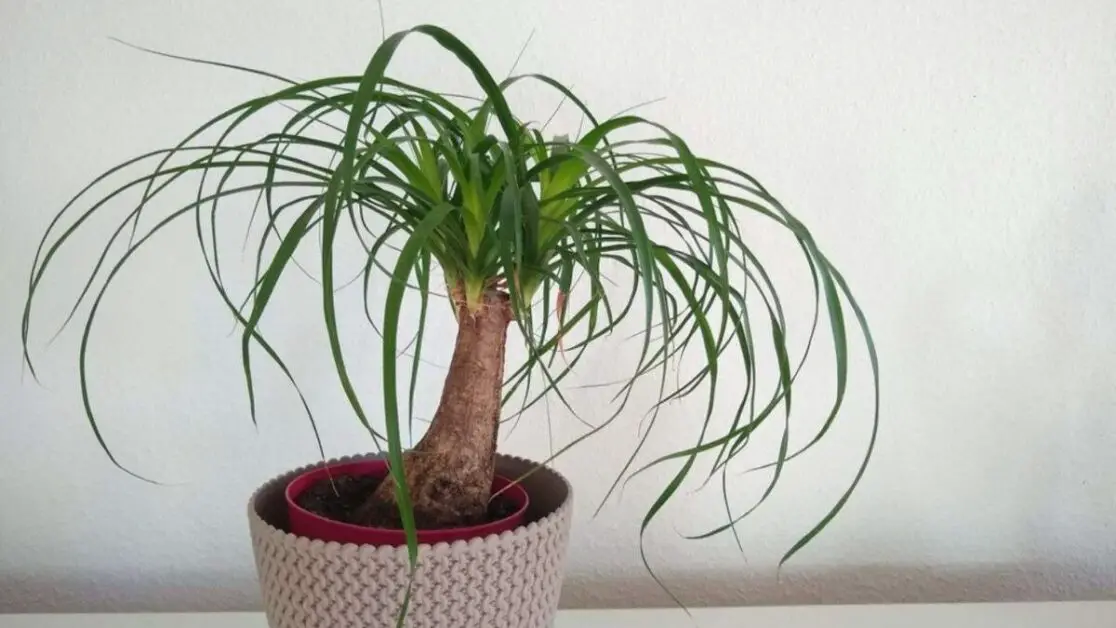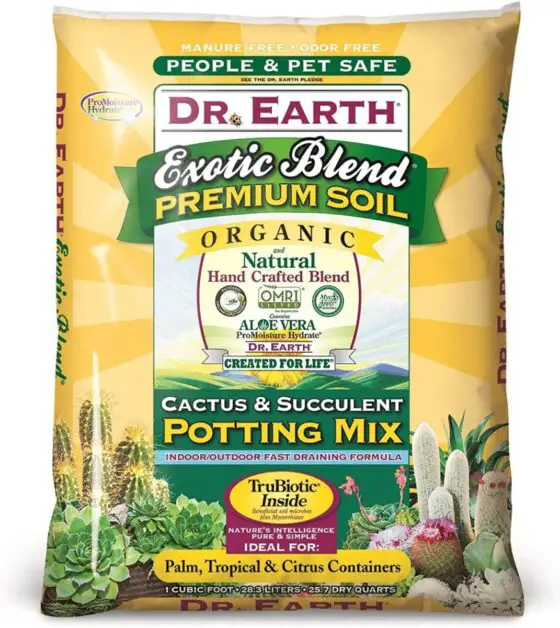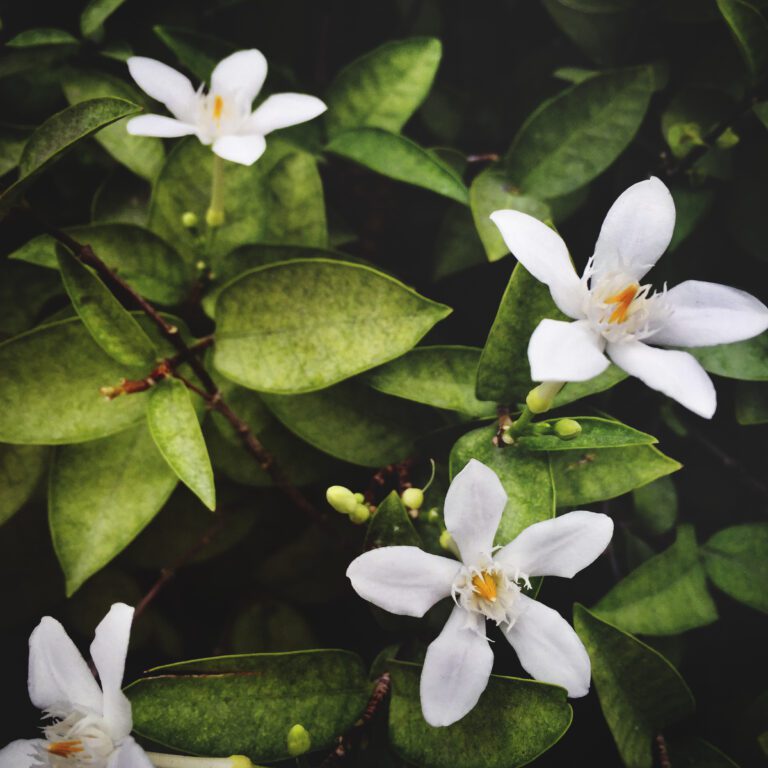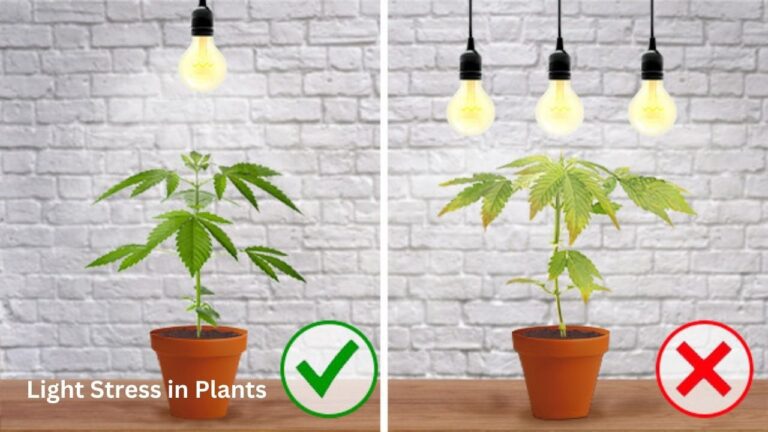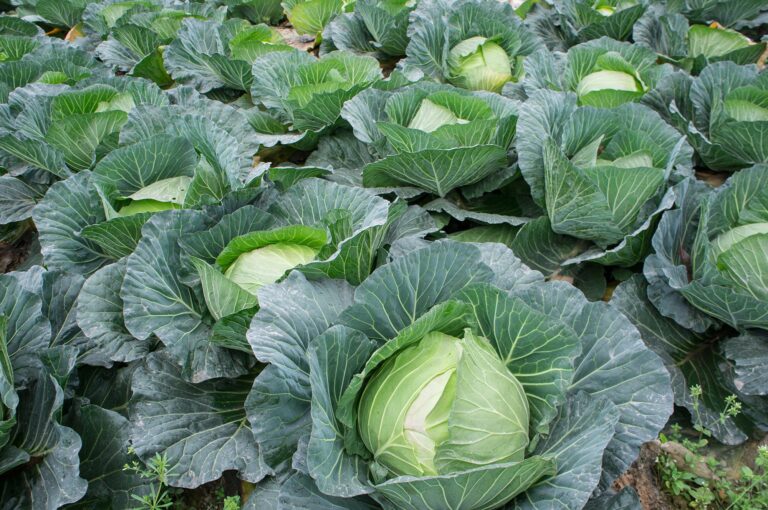Planting, Growing, and Caring for Ponytail Palm Trees
Ever wondered about a plant that looks like a palm tree but isn’t really one? Enter the fascinating world of Ponytail Palm Trees! These quirky plants are not only visually striking but also surprisingly easy to care for. In this blog, we’ll delve into the secrets of planting, growing, and nurturing these delightful additions to your indoor or outdoor space.
From their unique appearance to their low-maintenance nature, we’ll cover it all. Stay tuned to discover how you can bring a touch of exotic charm into your home or garden effortlessly. Let’s embark on this green journey together!
Table of Contents
Understanding the Ponytail Palm Tree: A Guide for Plant Enthusiasts
:strip_icc()/ponytail-palm-plant-95d1052f-5225efca51f94e66b0d1d66bbbe7a997.jpg)
- Scientific Name: Beaucarnea recurvata.
- Unique Features:
- Swollen Trunk: Tapers toward the top, resembling an elephant’s foot. This adaptation allows it to store water and nutrients, making it resilient in drought conditions.
- Leaves: Long, slender, and tough. They cascade gracefully from the top of the trunk, resembling a ponytail.
- Family: Belongs to the agave family, not a true palm tree.
- Native Habitat: Dry regions of Mexico.
- Popularity:
- Indoor and Outdoor: Suitable for both indoor and outdoor gardening.
- Low Maintenance: Ideal for busy individuals or beginners.
- Aesthetic Appeal: Adds an exotic touch to living rooms, offices, or gardens.
Remember, with proper care, the Ponytail Palm tree can thrive and bring joy for years to come! 🌿🌴
Selecting the Ideal Location for Your Ponytail Palm Tree
The selection of an ideal location for your ponytail palm tree is crucial for its overall growth and health. This unique plant thrives in warm and tropical environments, making it an excellent choice for indoor and outdoor settings. When choosing a location, it is important to consider several factors to ensure the best possible conditions for your ponytail palm tree to flourish.

- Sunlight:
- Provide bright, indirect light.
- Place near a south-facing window or an area with at least six hours of filtered sunlight.
- Avoid prolonged direct sunlight to prevent leaf scorching.
- Temperature:
- Ideal temperature range: 60-85°F (15-29°C).
- Avoid drafty areas and extreme temperature fluctuations.
- Humidity:
- Native to arid regions but appreciates some humidity.
- Use a tray with water and pebbles under the pot.
- Consider using a humidifier in dry indoor environments.
- Space Requirements:
- Ponytail palm trees can grow up to six feet (1.8 meters) tall.
- They have a spread of three to four feet (0.9-1.2 meters).
- Choose a location with enough room for growth.
By carefully considering these factors, you can select the ideal location for your ponytail palm tree and provide it with the optimal conditions for growth and wellbeing. Remember to strike a balance between sunlight, temperature, humidity, and space requirements to ensure a thriving and beautiful ponytail palm tree in your garden or indoor space.
Having used the HoMedics Ultrasonic Humidifier, I found it to be a versatile and visually appealing device. The color-changing feature added a nice touch to the room ambiance, making it both functional and aesthetically pleasing. The ultrasonic technology ensured quiet operation, which was perfect for use in my bedroom without causing any disturbance.
However, I did notice that the water tank capacity was relatively small, requiring frequent refills, especially in larger spaces. Overall, the HoMedics Ultrasonic Humidifier provided a pleasant experience with its quiet operation and attractive design, although the smaller tank size may be a consideration for those looking to humidify larger areas efficiently.
- HoMedics humidifiers offer both warm and cool mist options, providing flexibility for different preferences and needs.
- The ultrasonic technology used in HoMedics humidifiers ensures quiet operation, making them suitable for use in bedrooms or offices without causing disturbance.
- Some HoMedics humidifiers feature a compact and portable design, allowing for easy placement and movement around the home or office.
- The color-changing feature in certain HoMedics humidifiers adds a visually appealing element to the device, enhancing the ambiance of the room.
- Some users may find the water tank capacity of certain HoMedics humidifiers to be relatively small, requiring more frequent refills, especially in larger spaces.
- While ultrasonic technology is quiet, it may not be as effective in humidifying very large rooms or open-concept spaces compared to evaporative humidifiers
- Depending on the model, HoMedics humidifiers may require regular cleaning and maintenance to prevent the buildup of mold or bacteria, which can be time-consuming for some users.
- The price point of HoMedics humidifiers may be higher compared to basic models, which could be a consideration for budget-conscious consumers.
The Right Soil Mix for Healthy Ponytail Palm Tree Growth
A healthy ponytail palm tree starts with the right soil mix. This unique plant requires well-draining soil that mimics its native desert habitat. Sandy loam or cactus potting mix is ideal for promoting healthy root development and preventing waterlogged conditions. These soil mixes provide the perfect balance of moisture retention and drainage that ponytail palm trees need to thrive.

- Select Well-Draining Soil: Choose a potting mix that is well-draining when planting your Ponytail Palm. Avoid heavy clay or overly compacted soils to prevent root rot and other issues.
- Opt for Succulent Mix: Use a mix specifically formulated for succulents and desert plants. These mixes typically contain higher amounts of sand, perlite, and other amendments that enhance drainage while retaining adequate moisture for the plant’s requirements.
- Enhance Drainage: The right soil mix with proper drainage is crucial for the health and growth of your ponytail palm tree. It sets the foundation for a thriving and flourishing plant.
The following table explains about the right soil mix for healthy ponytail palm tree growth:
| Component | Percentage (%) |
|---|---|
| 1. Peat Moss | 40% |
| 2. Perlite | 30% |
| 3. Sand | 20% |
| 4. Potting Soil | 10% |
I recently used Dr. Earth’s Succulent Mix for my indoor succulent collection, and I am very impressed with the results. The mix is enriched with beneficial microbes, which has resulted in strong root development and healthier plants overall. I also appreciate that the mix is made from natural and organic ingredients, and contains no GMOs, chicken manure, sewage sludge, or other synthetic ingredients. This gives me peace of mind knowing that I am using a safe and environmentally-friendly product.
One thing to note is that the mix may be more expensive than other potting soils on the market, but I believe the quality and results are worth the investment. Additionally, the mix may not be readily available in all areas, but it can be easily ordered online.
Overall, I highly recommend Dr. Earth’s Succulent Mix for anyone looking to grow healthy and thriving succulents and cacti. The mix has exceeded my expectations, and I look forward to continuing to use it for my indoor garden.
✅ Contains no GMOs, chicken manure, sewage sludge, or other synthetic ingredients.
✅ Slow-release formula ensures consistent feeding over time.
✅ Contains a variety of natural and organic ingredients, such as fish bone meal, feather meal, and alfalfa meal.
✅ Suitable for all types of succulents and cacti.
❌ May not be readily available in all areas, requiring online ordering.
❌ Some users may prefer a more customizable nutrient blend, rather than a pre-mixed formula.
❌ May not be suitable for succulents or cacti that require specific pH levels, as the pH of the soil may vary.
❌ May not be the best option for large-scale commercial growing operations, due to cost and availability.
Sunlight Requirements: Providing Optimal Light for Your Ponytail Palm Tree
Ponytail palm trees are versatile and adaptable when it comes to their light requirements. To ensure optimal growth and development, it is essential to provide them with adequate sunlight. These trees thrive in bright, indirect light, making them suitable for various indoor spaces such as offices, living rooms, or bedrooms.
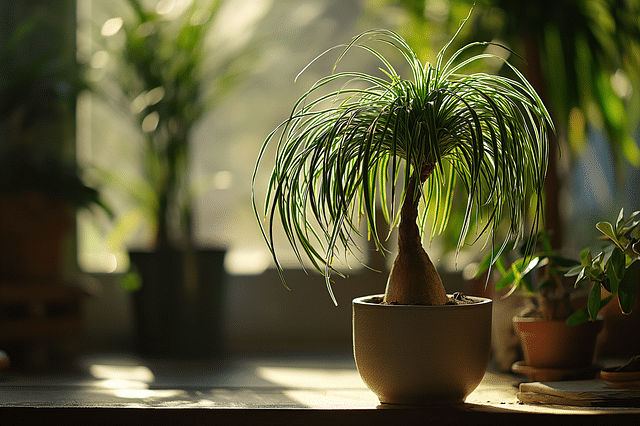
- Sunlight:
- Place near a window for bright, filtered light.
- Avoid direct sunlight to prevent leaf scorching.
- Yellow or brown leaves may indicate excessive sunlight.
- Adaptation to Lower Light:
- Ponytail palm trees can tolerate lower light conditions.
- However, this may result in slower growth and smaller leaves.
- Consider using artificial lighting, especially during winter.
- Artificial Lighting:
- Use a combination of cool white and full spectrum fluorescent lights.
- Position lights 12-24 inches above the plant to simulate sunlight.
Remember, finding the perfect balance of light is crucial for the overall health and well-being of your ponytail palm tree. By ensuring adequate sunlight, you can promote vibrant growth and enjoy the beauty of this unique plant in your home or garden.
Watering Techniques: Keeping Your Ponytail Palm Tree Hydrated
Proper watering techniques are crucial for maintaining the health and vitality of your ponytail palm tree. Sufficient hydration is essential, as this plant is native to arid regions and has adapted to conserve water. However, it is important to strike a balance between providing enough water to sustain growth and avoiding overwatering, which can lead to root rot and other issues.
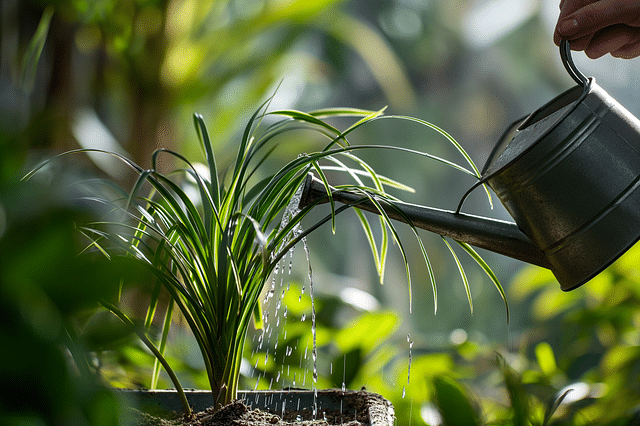
This helps prevent the development of mold or disease. Keep in mind that during the winter months or in cooler climates, the plant may require less frequent watering due to reduced growth and evaporation rates. By following these watering techniques, you can help ensure the health and vitality of your ponytail palm tree.
Fertilizing Guidelines for Promoting Vibrant Growth in Ponytail Palm Trees
Fertilizing is an essential aspect of promoting vibrant growth in ponytail palm trees. These beautiful and unique plants require proper nourishment to thrive and maintain their lush appearance. By following some simple guidelines, you can ensure that your ponytail palm tree receives the necessary nutrients for optimal growth and vitality.
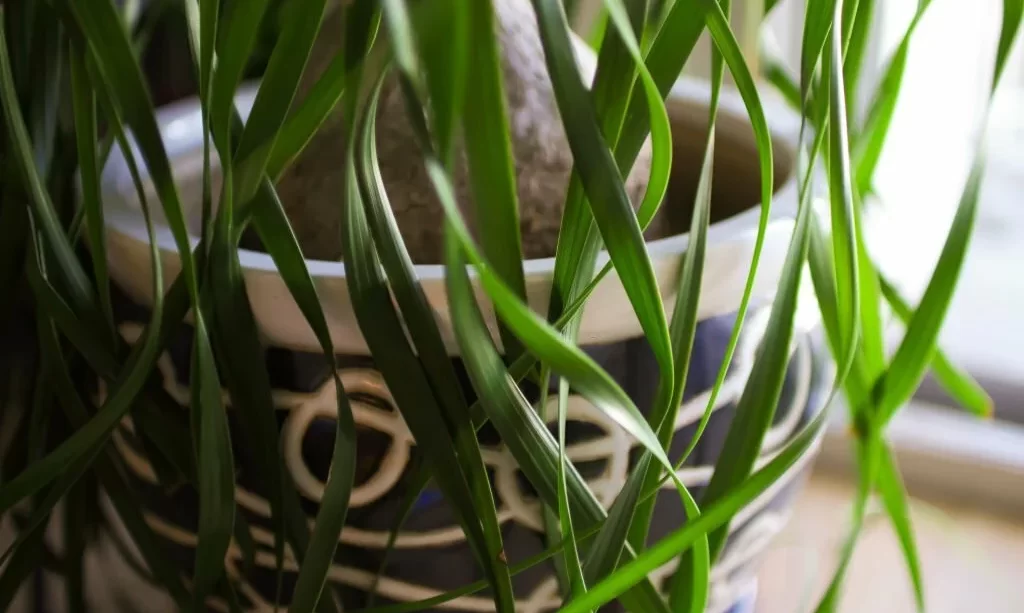
Here are the key points for caring for your Ponytail Palm tree:
- Choose the Right Fertilizer:
- Look for a balanced fertilizer specifically formulated for palm trees.
- Opt for an NPK ratio of 3-1-2 or 2-1-2 (nitrogen, phosphorus, potassium).
- These nutrients are crucial for healthy growth.
- Application Schedule:
- Apply fertilizer during the growing season (spring to early fall).
- Dilute the fertilizer in water according to the manufacturer’s instructions.
- Distribute evenly around the base of the palm tree.
- Avoid direct application on leaves or trunk.
- Watering After Fertilization:
- Thoroughly water the plant after each fertilization.
- Prevent salt buildup in the soil.
- Monitor Growth:
- Adjust fertilization routine based on plant size, fertilizer type, and soil condition.
By adhering to these guidelines and providing your ponytail palm tree with the necessary nutrients, you can ensure vibrant growth and a flourishing appearance.
Pruning and Trimming: Maintaining the Aesthetic Appeal of Your Ponytail Palm Tree
Pruning and trimming are essential practices for maintaining the aesthetic appeal of your ponytail palm tree. Not only do these activities promote a neat and tidy appearance, but they also contribute to the overall health and vitality of the plant. Regular pruning helps to remove any dead or yellowing leaves, allowing the palm tree to concentrate its resources on new growth.
- Pruning Techniques: Use sharp and clean pruning shears to make clean cuts just above the base of the leaf stem when pruning your ponytail palm tree. Avoid cutting too close to the trunk to prevent damage, and wear protective gloves to avoid injuries from the plant’s sharp leaf edges.
- Trimming Guidelines: When trimming your ponytail palm, remove excess foliage and shape the plant to maintain its desired appearance. Trim back unruly or long branches, ensuring not to remove more than one-third of the total foliage at a time.
- Observation and Balance: Step back periodically while trimming to observe the tree’s overall shape. Aim for a balanced and visually appealing outcome by maintaining the plant’s natural form and avoiding over-trimming.
By incorporating regular pruning and trimming practices into your ponytail palm tree care routine, you can enjoy a beautiful and well-maintained plant that adds a touch of elegance to any space.
Protecting Your Ponytail Palm Tree from Common Pests and Diseases
Ponytail Palm trees are generally resilient and relatively pest-free, making them a popular choice for both indoor and outdoor gardening. However, like any plant, they are susceptible to certain pests and diseases that can affect their overall health and appearance. It is important for ponytail palm tree owners to be proactive in protecting their plants from these common issues.
The following table explains about the ponytail palm tree from common pests and diseases:
| Pest/Disease | Preventive Measures | Treatment Methods | Frequency |
|---|---|---|---|
| 1. Mealybugs | – Regularly inspect leaves and stems. | – Insecticidal soap or neem oil. | Monthly inspection. |
| – Prune and remove affected leaves. | – Repeat treatment every 7-10 days as needed. | At the first sign of infestation. | |
| 2. Spider Mites | – Increase humidity levels around the plant. | – Apply horticultural oil or insecticidal soap. | Bi-weekly inspection. |
| – Rinse leaves with water to dislodge mites. | – Repeat treatment every 5-7 days until infestation is controlled. | During dry or hot periods. | |
| 3. Root Rot (Fungal) | – Use well-draining soil mix. | – Reduce watering frequency. | Regularly check soil moisture. |
| – Avoid overwatering. | – Remove affected roots and repot in fresh soil. | Adjust based on soil conditions. | |
| 4. Scale Insects | – Inspect undersides of leaves regularly. | – Remove scales with a cotton swab dipped in rubbing alcohol. | Monthly inspection. |
| – Prune heavily infested areas. | – Apply insecticidal soap or neem oil. | At the first sign of infestation. | |
| 5. Leaf Spot (Fungal) | – Avoid overhead watering. | – Prune affected leaves. | Regularly inspect leaves. |
| – Provide good air circulation. | – Apply fungicide if necessary. | During periods of high humidity. |
By being proactive in protecting ponytail palm trees from common pests and diseases, owners can ensure the long-term health and beauty of their plants. Regular inspection, early detection, and proper treatment measures, such as targeted insecticidal sprays or organic alternatives, can help keep these issues at bay.
Additionally, practicing good watering habits and ensuring adequate drainage can prevent diseases like root rot. By implementing these protective measures, gardeners can enjoy their stunning ponytail palm trees with minimal disruption from pests and diseases.
Repotting Your Ponytail Palm Tree: When and How to Do It
When it comes to the health and vitality of your ponytail palm tree, repotting is an essential aspect of proper care. Repotting allows the tree to have sufficient space for root growth and ensures that it has access to the necessary nutrients and water. Knowing when and how to repot your ponytail palm will contribute to its overall well-being and longevity.

- The ideal time to repot a ponytail palm tree is during the spring or early summer, when the plant is most active in growth.
- Look for signs that the tree has outgrown its current pot, such as roots emerging from the drainage holes or slowing growth.
- Choose a pot that is only slightly larger than the current one, as ponytail palms prefer being slightly root-bound.
- A well-draining potting mix that provides good aeration and retains moisture without becoming waterlogged is recommended.
- A mixture of equal parts peat moss, perlite, and coarse sand is often recommended for ponytail palms.
- Gently remove the tree from its current pot, being cautious not to damage the root system.
- Place it in the new pot, ensuring that the crown is level with or slightly above the soil surface.
- Fill the remaining empty space with the potting mix, pressing it lightly to secure the tree in place.
- Water the freshly repotted ponytail palm thoroughly to help settle the soil and promote root establishment.
Additional tips:
- Wait for the evidence of outgrowing the pot before repotting.
- Repotting isn’t a yearly fashion statement for your plant.
- A modestly larger pot will do the trick, preventing the drama of overwatering and the ensuing root rot.
- Selecting the right pot is crucial; aim for one that’s 2 inches wider than the current one with adequate drainage holes to prevent waterlogging.
- Loosen the soil by tapping or squeezing the pot, then gently tilt and ease the plant out.
- If the roots resist, use a clean tool to separate them from the pot’s edge.
- Inspect the root system and trim away any dead or rotting roots with sterile pruners to prevent decay.
- If the roots are tightly wound, make vertical cuts to encourage them to expand into the new soil.
- Be gentle; roots are the lifeline of your plant.
- Keep an eye out for signs of distress like a plant parent on prom night. If your Ponytail Palm throws a fit, adjust its care routine.
- Too much sun? Give it some shade. Not enough water? Time for a drink.
Propagation Methods: Growing New Ponytail Palm Trees from Offshoots
Growing new ponytail palm trees from offshoots is an effective and rewarding propagation method for plant enthusiasts. Offshoots, also known as pups or suckers, are small plants that develop at the base of a mature ponytail palm tree. These offshoots can be carefully removed and replanted to give rise to new and independent ponytail palm trees.
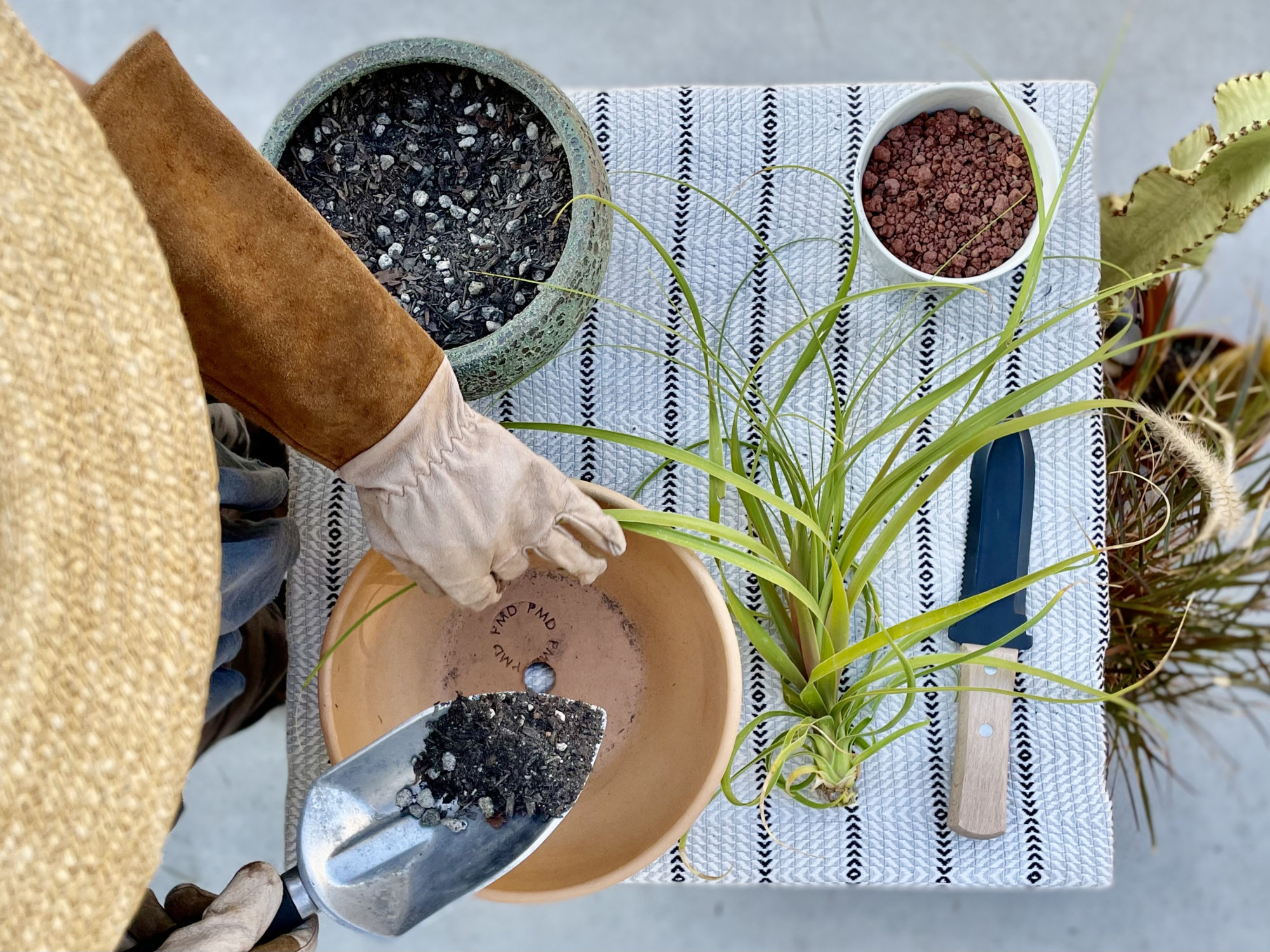
- To propagate a ponytail palm tree from offshoots, wait until the offshoots have reached a suitable size and have their own root system, typically when they are around one-third the size of the mature parent plant.
- Gently separate the offshoot from the main plant, taking care not to damage the roots.
- Allow the cut area to dry and callous for a few days before planting the offshoot in a well-draining soil mix.
- Provide adequate sunlight and regular watering to ensure healthy growth of the newly propagated ponytail palm tree.
- The offshoot will gradually develop into a beautiful and independent ponytail palm tree with proper care and attention.
- Propagation through offshoots is an excellent way to expand your collection of ponytail palm trees and share the joy of these unique and attractive plants with others.
So whether you are a seasoned gardener or a novice plant enthusiast, consider exploring the propagation method of growing new ponytail palm trees from offshoots, and witness the rewarding journey of nurturing life and greenery. writeit in point
Common Mistakes to Avoid in Ponytail Palm Tree Care
When caring for a Ponytail Palm Tree, it is important to avoid common mistakes that can hinder its growth and vitality.
overwatering
One common mistake is overwatering. Despite its name, the Ponytail Palm Tree does not require frequent watering. Overwatering can lead to root rot and other fungal diseases. It is essential to allow the soil to dry out between waterings to prevent moisture-related issues.
low-light area
Another mistake to avoid is placing the Ponytail Palm Tree in a low-light area. While this tree can tolerate some shade, it thrives in bright, indirect sunlight. Insufficient light can result in the tree becoming leggy or weak, with pale or yellowing leaves. Proper placement near a sunny window or under grow lights will ensure the tree receives the optimal amount of light it needs for healthy growth.
Enhancing the Aesthetic Appeal: Decorating Your Ponytail Palm Tree
Decorating your ponytail palm tree can not only enhance its aesthetic appeal but also add a personal touch to your garden or indoor space. There are several creative ways to beautify your ponytail palm tree, allowing you to showcase your personality and style.
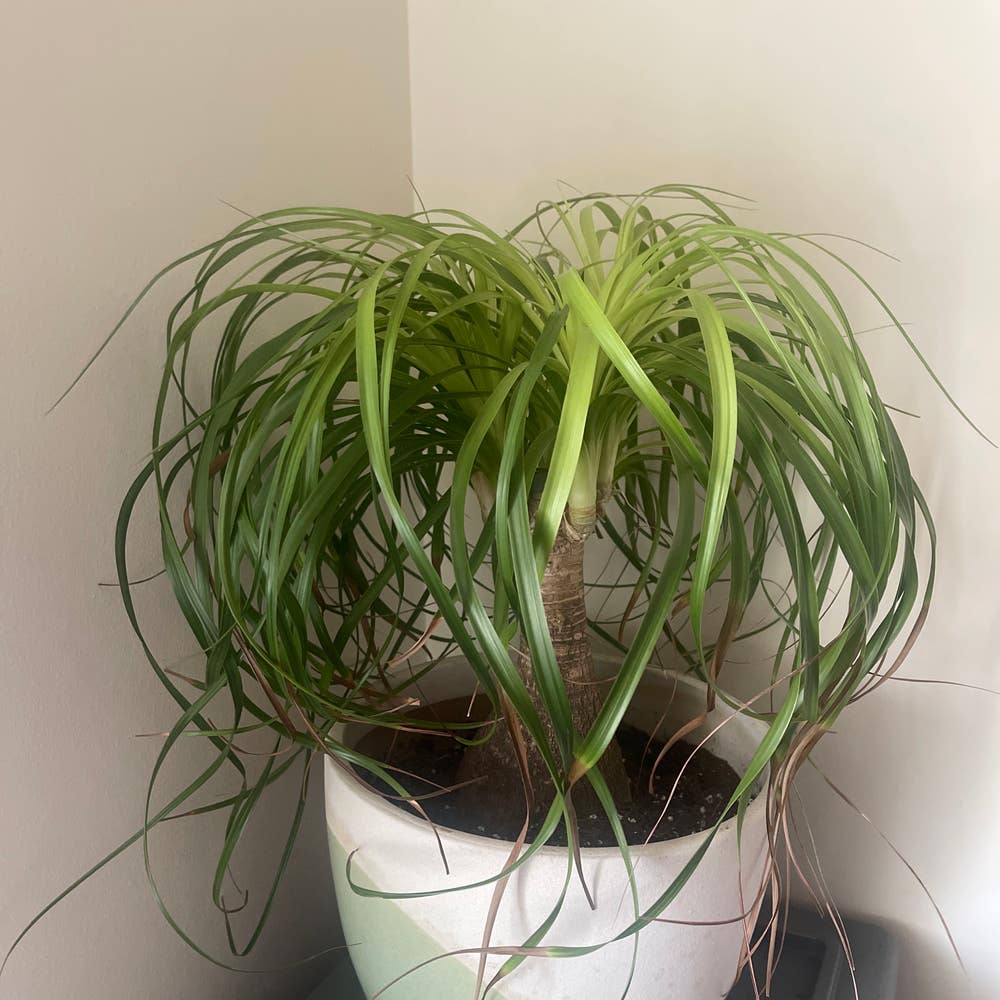
Here are the steps to decorate your ponytail palm tree:
- Choose a decorative pot or planter: Select a pot that complements the overall color scheme of your garden or interior space. You can choose from a wide range of materials such as terracotta, ceramic, or even woven baskets to add a touch of uniqueness to your palm tree.
- Plant the ponytail palm in the new pot: Gently remove the palm from its current pot, taking care not to damage the roots. Place it in the new pot, ensuring that the crown is level with or slightly above the soil surface. Fill the remaining empty space with a well-draining soil mix, pressing it lightly to secure the tree in place.
- Add decorative elements: Consider adding decorative elements like fairy lights or string lights to create a magical ambiance around your ponytail palm tree, especially during evening gatherings or special occasions. These lights can be wrapped around the trunk or draped among the foliage, adding a beautiful glow to the tree and the surrounding area.
- Incorporate decorative rocks or pebbles: Add decorative rocks or pebbles at the base of the ponytail palm tree. This not only adds visual interest but also helps retain moisture in the soil, promoting healthy growth. You can choose rocks or pebbles in various colors and sizes to create an eye-catching display.
- Keep the decorations tasteful and considerate of the plant’s needs: Avoid using materials that may harm the palm tree or interfere with its growth. With some creativity and imagination, you can transform your ponytail palm tree into a stunning focal point in your garden or indoor space.
Remember to keep the decorations tasteful and considerate of the plant’s needs. Avoid using materials that may harm the palm tree or interfere with its growth. With some creativity and imagination, you can transform your ponytail palm tree into a stunning focal point in your garden or indoor space.
Winter Care: Preparing Your Ponytail Palm Tree for Colder Months
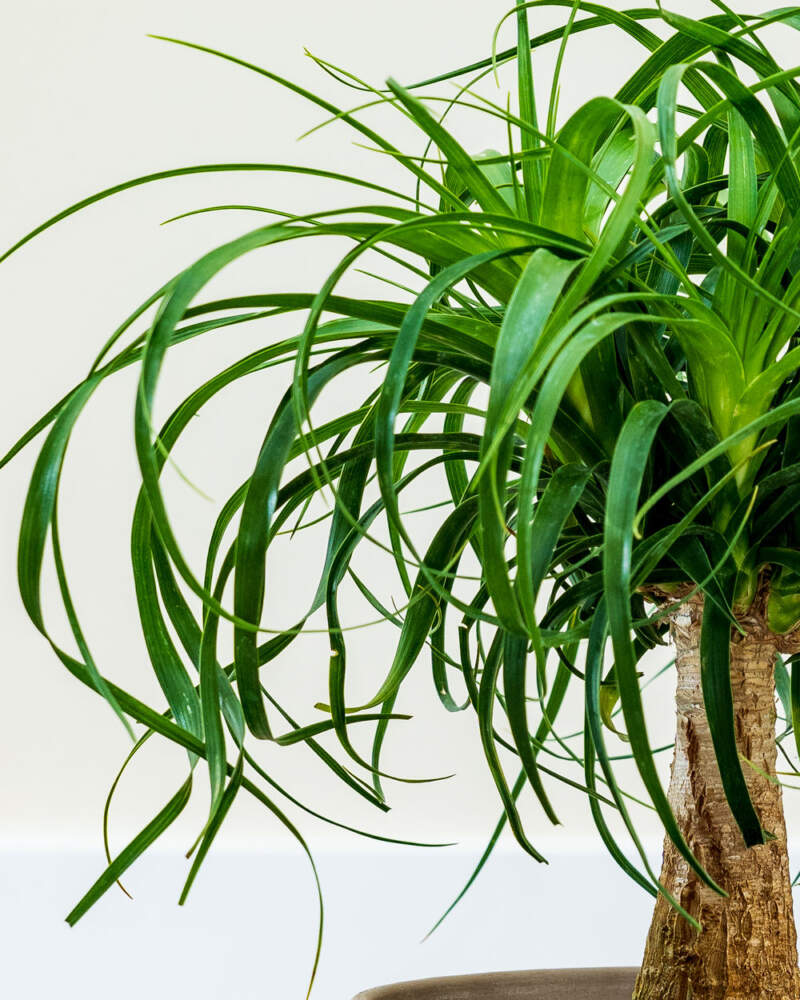
As the colder months approach, it is essential to ensure that your ponytail palm tree is adequately prepared to withstand the harsh conditions. While this tree is known for its resilience, some extra care during winter can go a long way in ensuring its optimal health and vitality.
- Protecting it from freezing temperatures: Ponytail palm trees are sensitive to cold weather, so it is crucial to protect them from frosts. Move the tree indoors or place it in a sheltered location such as a greenhouse or covered patio. You can also wrap the trunk and foliage with burlap or frost cloth to provide insulation and protect against frost damage.
- Adjusting your watering routine: Ponytail palm trees are adapted to survive in arid conditions, so overwatering can be detrimental to their health. As temperatures drop, the tree’s water requirements decrease. It is best to water sporadically, allowing the soil to partially dry between watering sessions.
Additional information:
- Ponytail palm trees are native to dry and warm climates, so they are sensitive to cold weather.
- Overwatering can be detrimental to the health of ponytail palm trees.
- Ponytail palm trees store water in the bulb, trunk, and roots, so they do not require frequent watering.
- Proper watering is crucial for the healthy growth of ponytail palm trees.
- Adjusting your watering routine during the winter season is essential to prevent overwatering and promote healthy growth.
- Ponytail palm trees prefer bright, indirect sunlight and well-draining soil.
- Regularly check the soil moisture and adjust your watering schedule accordingly.
- Avoid watering the bulb, as it can lead to rot and other issues.
- Ponytail palm trees are long-lived plants that can thrive for many years with proper care and attention.
Be cautious not to let the soil completely dry out, as this can cause stress to the tree. Finding the right balance will help prevent root rot and ensure the well-being of your ponytail palm tree throughout the colder months.
Troubleshooting: Identifying and Solving Common Issues in Ponytail Palm Trees
The Ponytail Palm tree is a resilient and low-maintenance plant, but like any living organism, it can face a few common issues that need to be addressed.
1. Light Yellow Leaves on a Ponytail Palm
- Cause: Overwatering and insufficient sunlight
- Solution: Move the ponytail palm to a brighter area with the most sun throughout the day. Prune yellow or dead leaves to encourage new growth.
- If yellowing is from overwatering, ensure the soil is dry before watering again.
2. Burnt or Brown Leaves on a Ponytail Palm
- Cause: Too much direct sunlight
- Solution: Move the ponytail palm to a location with bright, indirect light.
3. Root Rot
- Cause: Overwatering, poor drainage, or the wrong growing medium
- Solution: Check the roots for signs of root rot. If the roots look healthy, repot the ponytail palm in fresh growing medium. If there are signs of root rot, cut away any dead, dying, or affected roots, rinse the remaining roots, and allow them to dry before repotting in fresh growing medium.
4. Underwatering
- Cause: Not enough water in the soil
- Solution: Water the ponytail palm thoroughly, ensuring the soil is moist but not waterlogged.
5. Pests
- Cause: Insects such as scale, mealybugs, or spider mites
- Solution: Check the ponytail palm regularly for signs of pests. If pests are found, treat the plant with insecticidal soap or neem oil.
By addressing these common issues promptly and providing the necessary care, you can maintain the health and vibrancy of your Ponytail Palm tree.
Understanding the Lifespan of Ponytail
The Ponytail Palm, also known as Beaucarnea recurvata, is a fascinating plant that can bring beauty and elegance to any indoor or outdoor space. As a gardener or plant enthusiast, it’s important to understand the lifespan of the Ponytail Palm in order to provide the best care and ensure its longevity.
Here are the key points to promote a healthy and long life for your Ponytail Palm:
- Lifespan: The Ponytail Palm has an average lifespan of about 30 to 40 years under optimal conditions, but some specimens have been known to live for over 100 years.
- Growing Conditions: Provide the plant with the ideal growing conditions, including the right amount of sunlight, a well-draining soil mix, and appropriate watering.
- Sunlight: Place the Ponytail Palm in a location that offers bright indirect light to full sun, ensuring it receives adequate sunlight for healthy growth.
- Soil: Use a well-draining soil mix to prevent waterlogging and root rot, as Ponytail Palms are sensitive to overwatering.
- Watering: Allow the soil to dry out completely between waterings to prevent issues related to overwatering.
- Pests and Diseases: Protect the plant from common pests like red spider mites, scale insects, and mealybugs. Regularly inspect the plant for any signs of pests or diseases to maintain its health.
- Care Routine: Implement a proper care routine that includes monitoring sunlight exposure, watering frequency, and soil moisture levels to ensure the plant’s well-being.
- Longevity: By understanding and implementing these care guidelines consistently, you can help extend the lifespan of your Ponytail Palm and enjoy its beauty for many years.
Ensuring the Ponytail Palm receives the right care, environmental conditions, and protection from pests and diseases will contribute to its longevity and overall health.
Watch video for more information:
FAQ
How long does a ponytail palm tree typically live?
A ponytail palm tree can live for several decades with proper care, often reaching an average lifespan of 50 to 100 years.
Is it possible to extend the lifespan of a ponytail palm tree?
While there are no guaranteed methods to extend its lifespan, providing optimal care, including proper watering, sunlight, and protection from pests, can promote the overall health and longevity of your ponytail palm tree.
Can a ponytail palm tree die prematurely?
Yes, a ponytail palm tree can die prematurely if it is subjected to unfavorable conditions such as overwatering, inadequate sunlight, or improper soil mix. Additionally, pest infestations or diseases can also contribute to its early demise.
How can I protect my ponytail palm tree from common diseases?
To protect your ponytail palm tree from common diseases, ensure that you provide adequate drainage, avoid overwatering, and maintain a clean environment around the tree. Regularly inspect your plant for any signs of disease and promptly treat any issues that arise.
Can I propagate a new ponytail palm tree from offshoots?
Yes, you can propagate a new ponytail palm tree from offshoots. These offshoots, also known as pups or babies, can be carefully separated from the parent plant and planted in well-draining soil to grow into new trees.
Are there any common mistakes to avoid in ponytail palm tree care?
Yes, some common mistakes to avoid in ponytail palm tree care include overwatering, using heavy or compacted soil, placing the tree in low-light areas, and neglecting regular maintenance tasks like pruning and fertilizing.
How can I enhance the aesthetic appeal of my ponytail palm tree?
To enhance the aesthetic appeal of your ponytail palm tree, you can consider decorating it with suitable accessories like decorative pots, pebbles, or natural ornaments. However, avoid using materials that may harm the plant or hinder its growth.
What precautions should I take to prepare my ponytail palm tree for colder months?
During colder months, it is important to protect your ponytail palm tree from frost and freezing temperatures. Move it indoors or to a sheltered area, provide adequate warmth, and reduce watering frequency to prevent root rot.
How do I troubleshoot common issues in ponytail palm trees?
When troubleshooting common issues in ponytail palm trees, carefully examine the plant for symptoms such as yellowing leaves, rotting stems, or pest infestations. Identifying the underlying cause will help in implementing appropriate solutions, such as adjusting watering habits or using organic pest control methods.

Studied Agricultural Engineering-Plant Protection at University of California, Davis.
Head of Content writing team at Southelmontehydroponics.com

